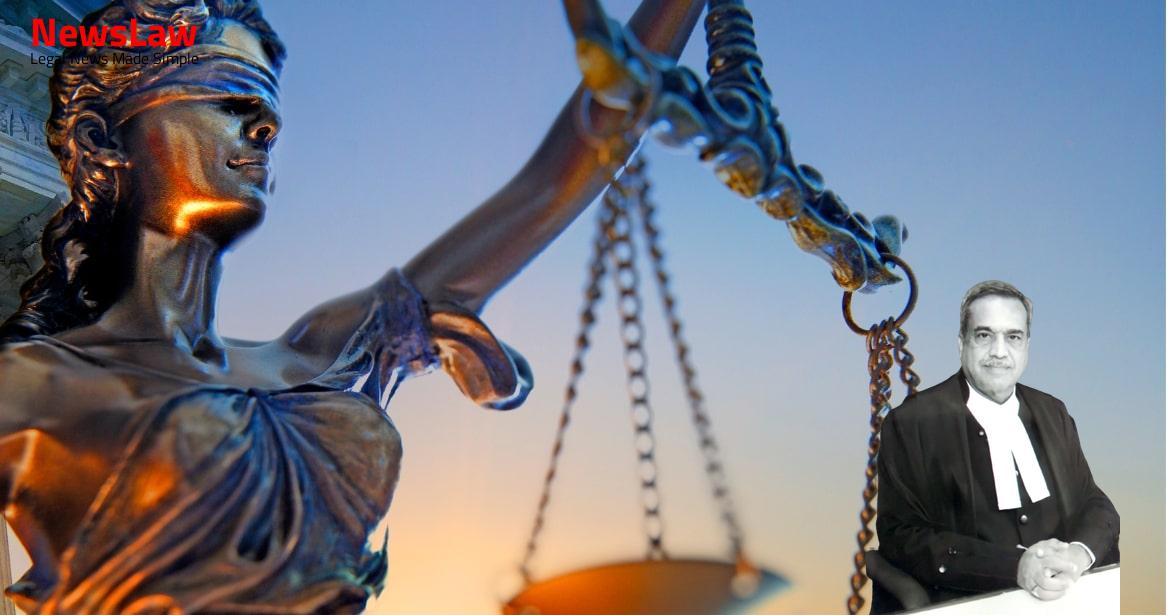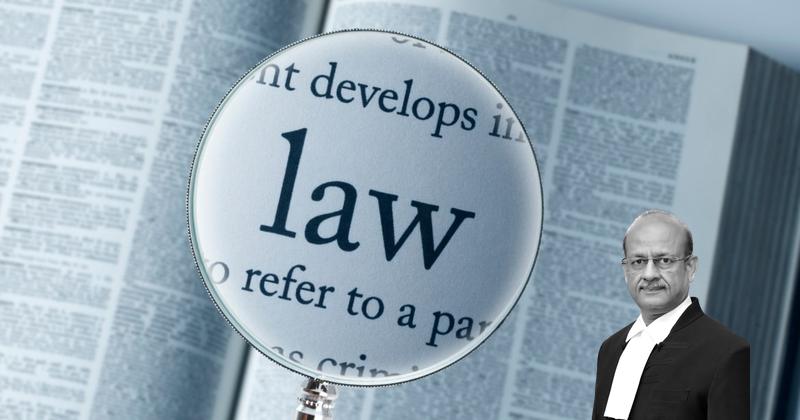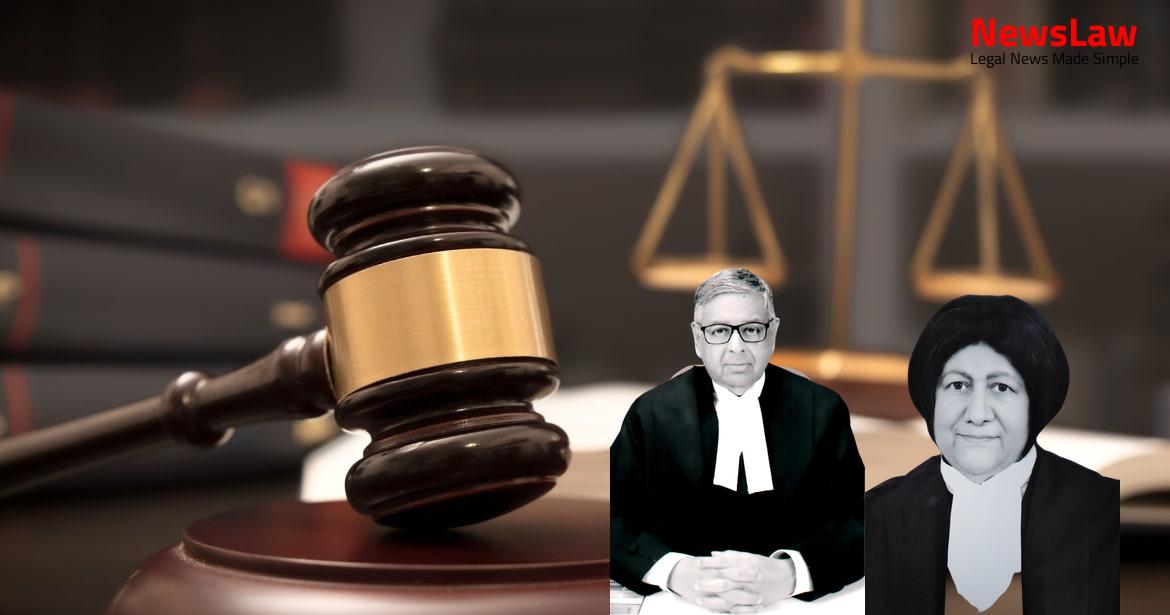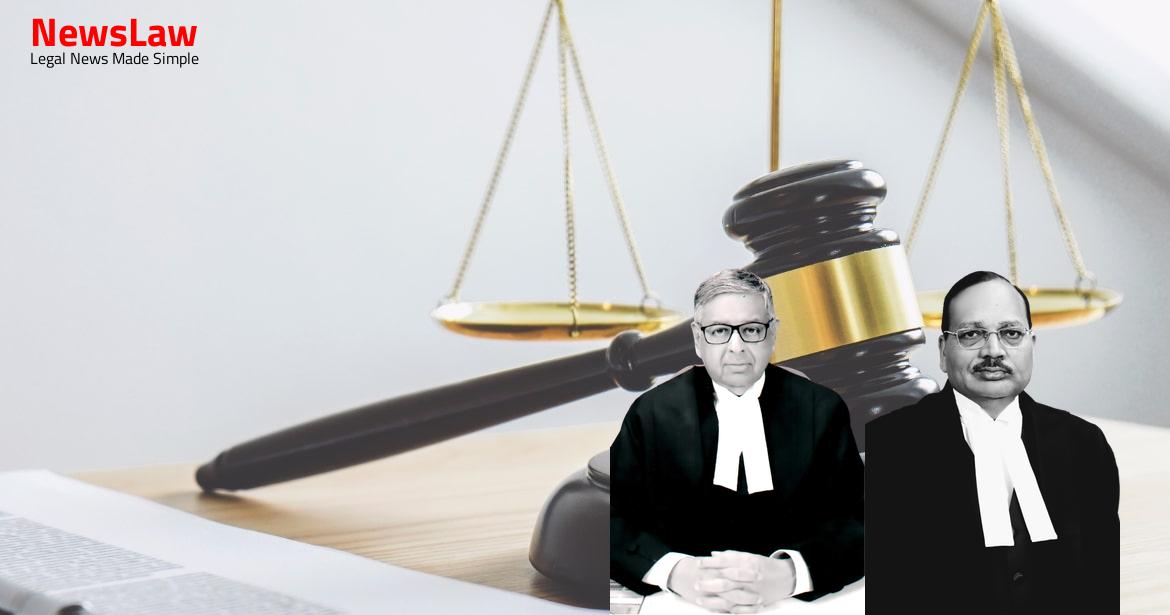In a recent legal case, the court’s thorough legal analysis played a crucial role in upholding the conviction amidst a contested scenario. The detailed examination of evidence and application of legal principles resulted in the decision that has far-reaching implications. Let’s delve deeper into how the court’s analysis shaped the outcome of this case.
Facts
- The appellant was aggrieved by the judgment and order dated 28.02.2017 passed by the High Court of Jharkhand.
- The High Court dismissed the appellant’s appeal and confirmed the order of conviction and sentence by the Sessions Court.
- The appellant was convicted for offences under Section 302 read with Section 34 IPC and Section 27 of the Arms Act, and sentenced to life imprisonment.
- Birendra Singh was tried separately and convicted for offences under Sections 302/34 IPC.
- The High Court’s judgment dated 28.02.2017, upheld the appellant’s conviction and sentence.
- Suraj Mandal, as P.W.27, was examined as an injured eye-witness in the case.
- Appellant and another were tried for offenses under Sections 302/34 IPC and Section 27 of the Arms Act.
- Appellant appealed against the judgment of conviction passed by the Trial Court.
- 35 witnesses were examined by the prosecution to prove the case against the accused.
- Doctor who performed post-mortem on the deceased and examined Suraj Mandal also testified.
- The case was registered for offenses under Sections 302/307/34 IPC and Section 27 of the Arms Act.
- Investigation was taken up by the CBI after the death of one of the accused during the High Court appeal.
- Pandit and Pappu, brothers of Birendra Singh, were identified by witnesses at the scene of the incident.
- A supplementary charge-sheet was filed against the appellant and another after their surrender/arrest.
- Birendra Singh fired upon Nirmal Mehto, causing injuries and resulting in a charge-sheet against the appellant.
Also Read: Judicial Review of Delayed Writ Petition
Arguments
- The appellant’s advocate argued that there are material contradictions in the depositions of the prosecution witnesses regarding the role of the appellant in the offense.
- It was claimed that it was not possible for the informant to provide a written statement (Fardbeyan) as per the prosecution.
- The appellant’s advocate highlighted that there were originally five eye-witnesses mentioned by the prosecution, but ultimately only three were examined.
- The defense stressed that it was not conclusively proven that the appellant was responsible for the victim’s death or for firing shots.
- The prosecution’s decision to drop two eye-witnesses due to contradictions in their depositions was mentioned.
- The State representative opposed the appeal, emphasizing that the written statement by the informant conflicted with the fact that the informant sustained a hand injury from a firearm.
- The appellant’s legal counsel argued that the trial court and the High Court made a mistake in relying on the statements of the prosecution witnesses, pointing out the contradictions in their testimonies.
- It was highlighted that there was no allegation of assault on the appellant in the FIR, casting doubt on the appellant’s presence at the scene of the incident.
- The absence of any firearm recovery or seizure from the appellant was pointed out as well.
- The defense emphasized that one of the witnesses could not definitively attribute the victim’s injury to the appellant, leading to doubts about the appellant’s involvement.
- Considering the contradictions in the eye-witness testimonies, the defense argued that the appellant should benefit from the doubt.
- The informant, P.W.27, is an injured eye-witness who suffered a firearm injury, as proven by medical evidence and the doctor’s deposition.
- The appellant absconded for 13 to 15 years after the incident, leading to variations and contradictions in the evidence recorded later.
- The conviction of the accused with the aid of Section 34 IPC was upheld by the High Court, establishing his presence and participation.
- Minor contradictions in the evidence shall not benefit the accused when the accused’s participation has been proved.
Also Read: Ownership Dispute: Legal Analysis on Admission and Decree
Analysis
- The prosecution’s case is supported by the depositions of key witnesses P.W.7, P.W.8, and P.W.27.
- Both trial courts found no reason to doubt the appellant-accused’s presence and active participation in the incident.
- Minor contradictions in the witnesses’ depositions are attributed to the significant time gap of approximately 15 years since the incident.
- The appellant’s presence at the scene, use of firearm, and injuries sustained are proven by medical evidence.
- The appellant’s conviction under Section 302 with the aid of Section 34 IPC is based on established participation in the crime.
- The informant-injured eye-witness, P.W.27, had his trial separated.
- The appellant evaded authorities and absconded for around 15 years following the incident.
- The absence of a seized weapon should not lead to the acquittal of the accused
- Presence and active participation of the accused in using a firearm must be established and proven for conviction
Also Read: Interpretation of Statutory Limitation under Section 263(2)
Decision
- Both Trial Court and High Court have rightly convicted the appellant-accused under Section 302 read with Section 34 IPC.
- No interference of this Court is warranted.
- The present appeal fails and deserves to be dismissed.
Case Title: DHIRENDRA SINGH @ PAPPU Vs. THE STATE OF JHARKHAND (2021 INSC 131)
Case Number: Crl.A. No.-000580-000580 / 2018



